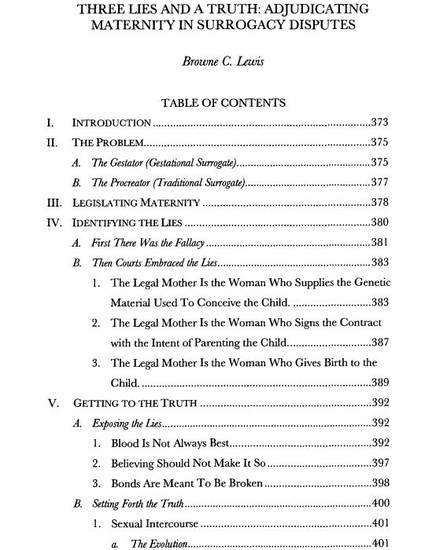
- maternity,
- surrogacy,
- best interests of the child,
- family law
Historically, courts were called on to answer the following question: What makes a man a legal father? Courts applied different presumptions to arrive at the answer. For example, if the case involved a married couple, the woman's husband was presumed to be the legal father.1 In situations involving an unmarried woman, the man who helped to conceive the child was the legal father. While paternity was being litigated, maternity was resolved-the woman who gave birth to the child was the child's legal mother. The phrase “momma's baby, papa's maybe” reflected society's attitude towards maternity. Since the woman who gave birth to the child also supplied the genetic material that created the child, maternity was not usually challenged. Hence, the courts did not have a hard time adjudicating maternity. Advances in reproductive technology have led to a change in the legal landscape. Consequently, two different women may claim to be the legal mother of the same child.6 As usual, the law has been slow to respond to the advances in medicine. This Article is divided into four main Parts. Part II introduces the problem. Part III contains a discussion of the limited role legislatures have played in clarifying the legal status of the women involved in the surrogacy process. Part IV analyzes the tests or standards courts have employed to determine maternity in surrogacy cases. Part V explains the reasons why the best interests of the child standard is the one that courts should apply to determine the legal mother of the child conceived as the result of a surrogacy agreement.
